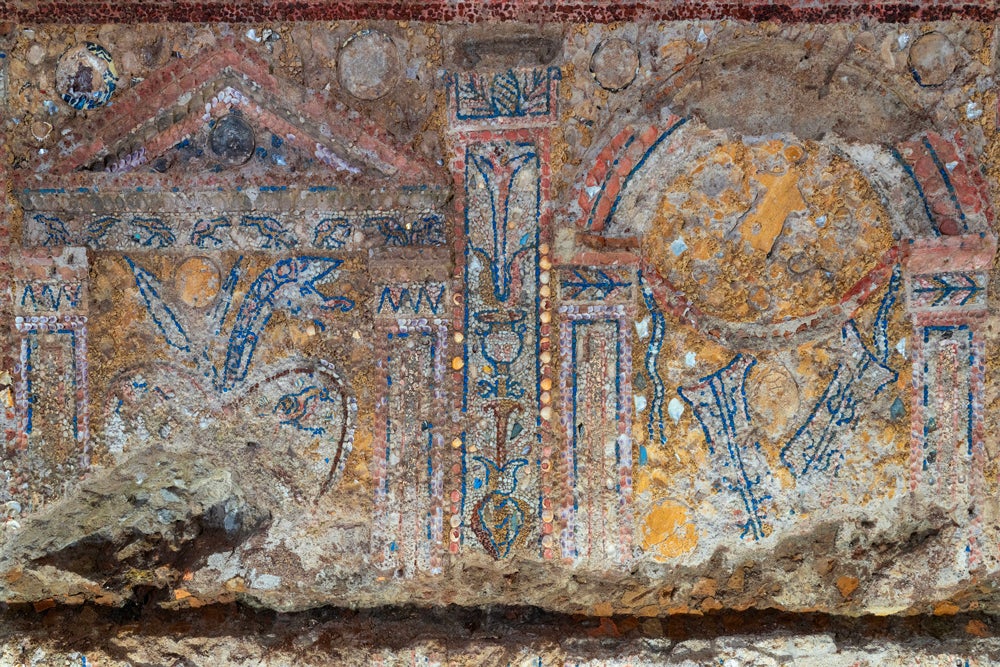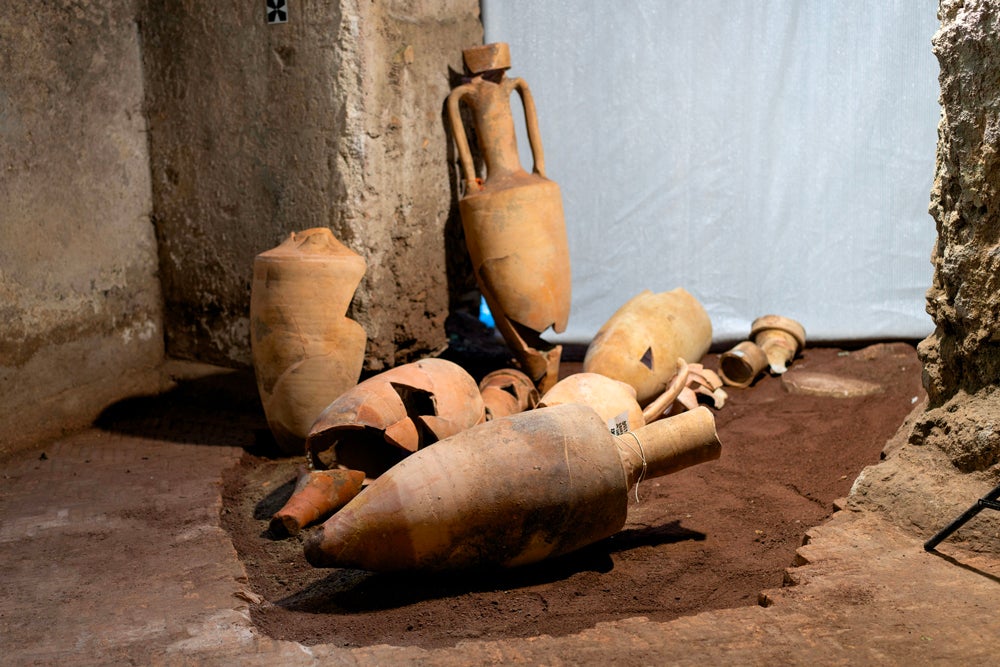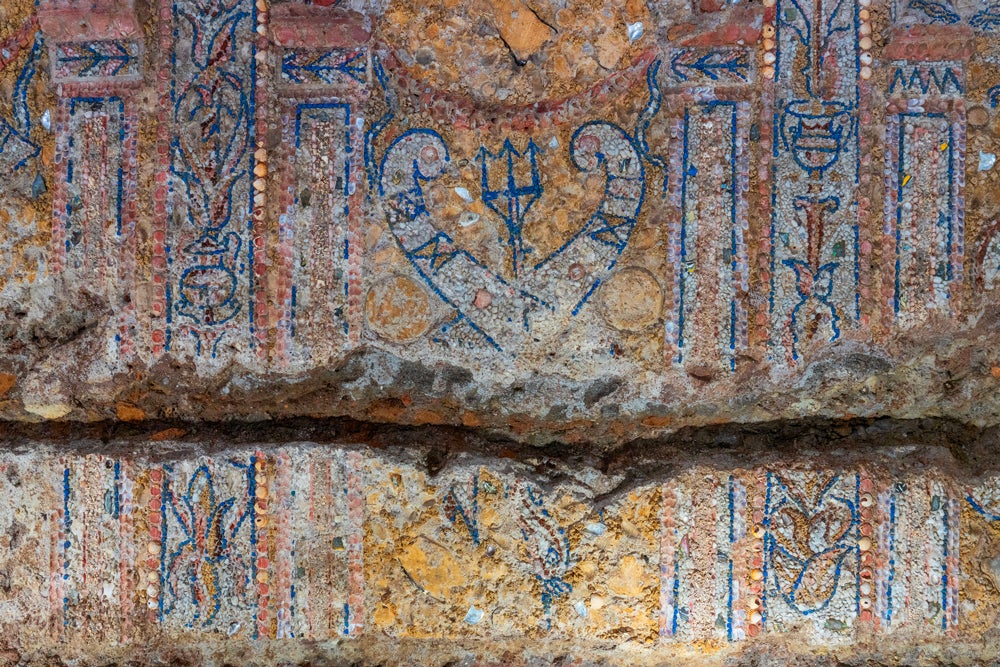Two thousands year-old mosaic made of shells and coral found buried under Rome
Now archaeologists are hoping to discover who the domus belonged to

Your support helps us to tell the story
From reproductive rights to climate change to Big Tech, The Independent is on the ground when the story is developing. Whether it's investigating the financials of Elon Musk's pro-Trump PAC or producing our latest documentary, 'The A Word', which shines a light on the American women fighting for reproductive rights, we know how important it is to parse out the facts from the messaging.
At such a critical moment in US history, we need reporters on the ground. Your donation allows us to keep sending journalists to speak to both sides of the story.
The Independent is trusted by Americans across the entire political spectrum. And unlike many other quality news outlets, we choose not to lock Americans out of our reporting and analysis with paywalls. We believe quality journalism should be available to everyone, paid for by those who can afford it.
Your support makes all the difference.Archeologists have unearthed an incredible 2,300 year old mosaic near the Roman Colosseum.
The intricate design was uncovered after a five year dig at the side of Rome’s Palatine Hill unmasked a grand banquet room dating back to the first or second century.
Historians estimate the work is estimated 2,300 years old and makes up part of an aristocratic mansion, near the Roman Forum, which archaeologists have been digging since 2018.
The ancient artwork is almost five metres long and is made up of colourful shells, mothar of pearl, shells, corals, precious glass and marble.
The masterpiece depicts a mythological underwater scene depicting magical marine creatures, tridents, trumpets, vines and lotus leaves, CNN report.

Alfonsio Russo, head of the Colosseum Aracheological Park told the news outlet: “In ancient times, when powerful noble families inhabited the Palatine Hill, it was customary to use rich decorative elements as a symbol to show-off opulence and high social rank.”
Professor Russo described the discovery as unmatched and says the chamber would have overlooked a garden and would have been important for entertaining guests during summer months.
Marco Rossi, professor of Roman antiquities and head of the mosaic lab at Rome’s Università degli Studi di Roma Tre explained: “Mosaics are usually found on floors, but this runs across the entire front wall and has been incredibly well-preserved,” said Rossi of the piece.
“It’s not been ruined by the weight of debris — as can happen to some mosaics on the ground — and despite being delicate, it hasn’t so much as chipped across the centuries.

of CultuThe detailed mosaic also features battle both naval and on land battles which were won by a rich aristocratic patron who would have celebrated their wins through such work.
Professor Rossi explained the artwork would have been a signifier of great social standing and wealth and that this type of discovery is extremely rare since wall pieces are more delicate than those found on floors which were made to withstand trampling.
Those working on the project are trying to ascertain whether the coral used in the piece are from the Mediterranean or Red Sea and are hoping to uncover the identity of the owner, who is likely a Roman senator, explained Ms Russo.
They are hopeful the space will be open for public viewing from January.
Join our commenting forum
Join thought-provoking conversations, follow other Independent readers and see their replies
Comments